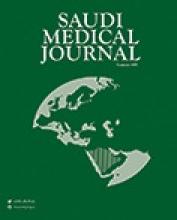Abstract
OBJECTIVE: To investigate the toxic effects of ropivacaine on corneal endothelium by using the impression cytological method.
METHODS: The study was performed between October and December 2004 in Dicle University Hospital, Diyarbakir, Turkey. Twenty-four eyes from 12 rats were used for the research. They were divided into 4 groups, each containing 3 different ropivacaine concentrations and a control. Immediately after enucleation, the corneas were excised and the endothelium was exposed to unpreserved ropivacaine 0.01, 0.1, or 1% and balanced salt solutions (BSS) as a control (6 corneas/group) for 20 minutes. The specimens were obtained by impression cytology method and stained with periodic acid shift. Then, they were examined under light microscope.
RESULTS: Blurring at cell membrane borders, vacuolization at cell cytoplasm, hydropic degeneration and increase in toxic granulation were observed in the 1% ropivacaine group. Cytoplasmic hydropic degeneration was determined in the 0.1% ropivacaine group. Cell structures were normal and almost identical to the control group in the 0.01% ropivacaine group.
CONCLUSION: In this study, 2 major conclusions were determined. The impression cytology method can be used in examination of corneal endothelium, and exposure of rat corneal endothelium to 0.01% ropivacaine solutions in vitro appears to be non-toxic.
- Copyright: © Saudi Medical Journal
This is an open-access article distributed under the terms of the Creative Commons Attribution-Noncommercial-Share Alike 3.0 Unported, which permits unrestricted use, distribution, and reproduction in any medium, provided the original work is properly cited.






